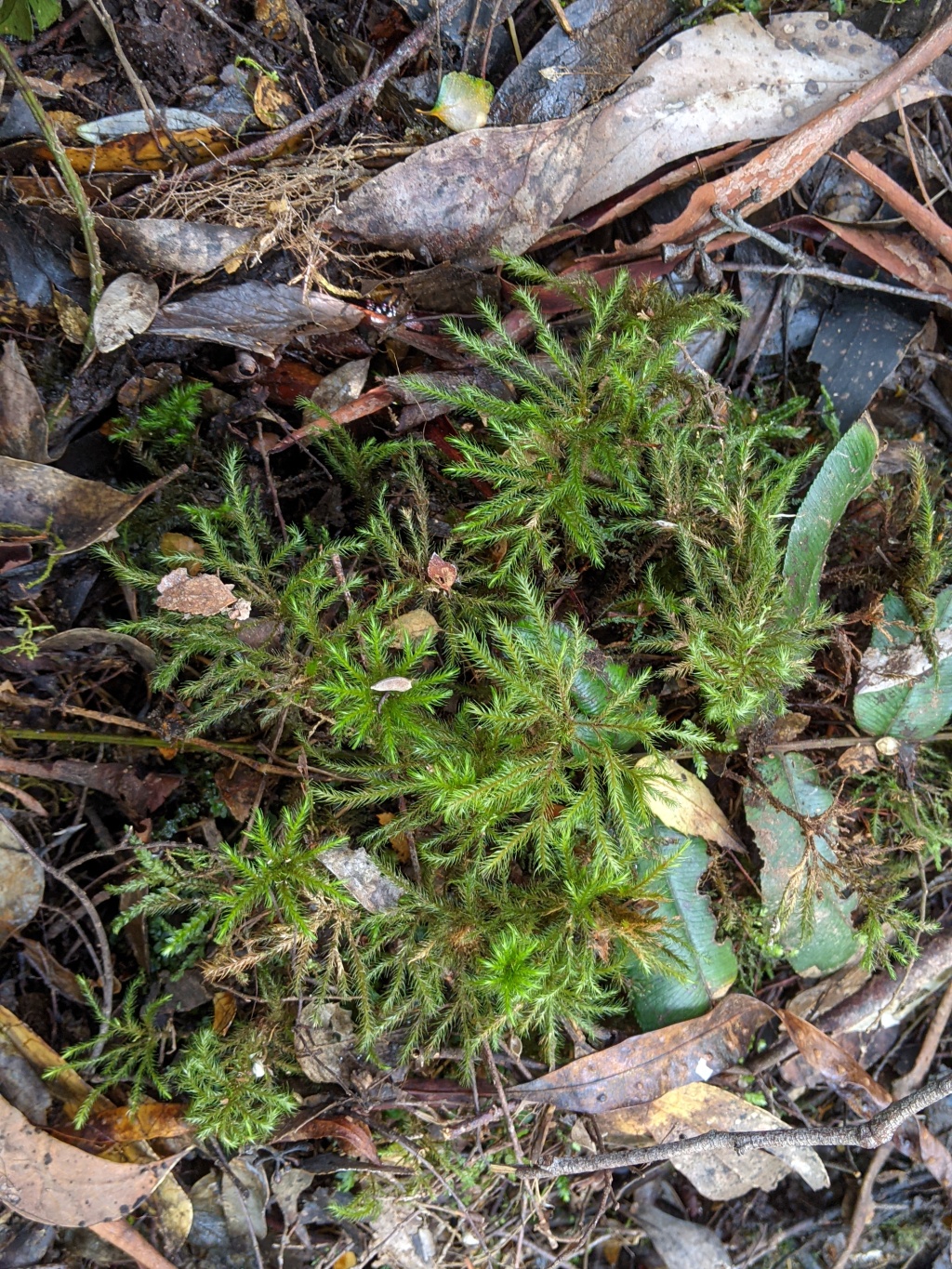Mniodendron
Tufts on rocks, soil, logs or rarely on tree trunks. Stems differentiated into basal stipe section and branched frond section. Stipes erect, tomentose throughout, with small spreading pseudoparaphyllia. Fronds oriented ±perpendicular to stipes when erect, usually umbellate, sometimes palmate to or pinnate, with branches simple, pinnate or bipinnate (not in Victoria). Stipe leaves widely spreading to squarrose-recurved, spreading in all directions from the stem, increasing in size toward frond, usually auriculate or cordate and decurrent at base, rarely rounded at base. Branch leaves isomorphous, symmetric or nearly so, erecto-patent to falcate-secund. Costa subpercurrent (not in Victoria), percurrent (not in Victoria), or short- or long-excurrent as a smooth or toothed hairpoint. Margins serrulate to serrate at least toward apex, without paired teeth, unistratose or occasionally bistratose, without a distinct border. Laminal cells linear, sometimes shorter and darker coloured at margin, smooth or prorate. Alar cells enlarged, forming a conspicuous or ill-defined group; walls thin or incrassate, hyaline or orange. Capsules inclined to pendent, costate to sulcate. Opercula sharply rostrate from conic base.
7 species shared between Sri Lanka, Vietnam, Malesia through to Tahiti and New Zealand. 2 species in Victoria.
Mniodendron was previously included within Hypnodendron. However, Hypnodendron in its broad circumscription presented by Touw (1971) was composed of multiple lineages based on phylogenetic analyses of chloroplast and mitochondrial sequences (Bell & Newton 2005; Bell et al. 2007). Some of these lineages are more closely related to other clearly distinct genera than they are to the lineage containing the type of Hypnodendron (Bell & Newton 2005; Bell et al. 2007). Two lineages match previously recognised genera, Mniodendron being one of them, while the others match groups of sections recognised by Touw (1971). The exothecial cell composition, arrangement and uniformity of branch leaves, degree of spreading of stipe leaves, and extent of tomentum on the stem varies between the lineages and can serve to distinguish them from Hypnodendron (Bell et al. 2007). Consequently, all these lineages, including Mniodendron, are now recognised as separate genera.
 Spinning
SpinningBell, N.E.; Newton, A.E. (2005). The paraphyly of Hypnodendron and the phylogeny of related non-Hypnanaean pleurocarpous mosses inferred from chloroplast and mitochondrial sequence data. Systematic Botany 30: 34–51.
Bell, N.E.; Quandt, D.; O’Brien, T.J.; Newton, A.E. (2007). Taxonomy and phylogeny in the earliest diverging pleurocarps: square holes and bifurcating pegs. The Bryologist 110: 533–560.
Touw, A. (1971). A taxonomic revision of the Hypnodendraceae (Musci). Blumea 19: 211–354.

